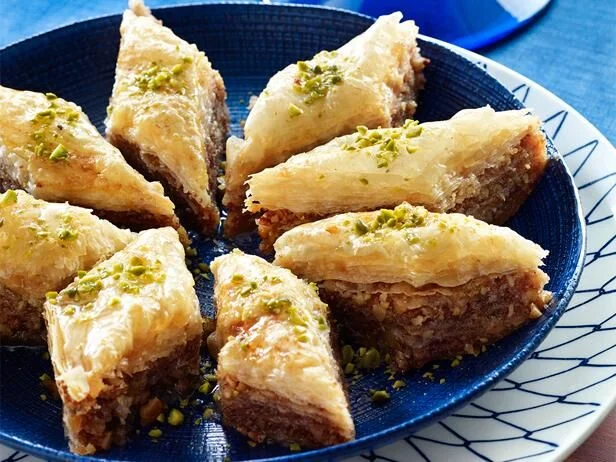Interesting facts on Ramazan Bayrami
WHAT IS RAMADAN?
Ramazan Bayrami is a three-day festival when sweets are eaten to celebrate the end of the fast from the Ramadan month. Also known as "Seker (sweets) Bayrami" since it's customary to offer candies to family members and friends that are visiting. Ramazan Bayrami (or Seker Bayrami) in 2018 will be on 15-16-17 June, in 2019 will be on 5-6-7 June, in 2020 will be on 24-25-26 May.
One of our favourite dishes is Baklava and we wanted to share with you some history and our favourite recipe from the team @ Foodie Trails. Baklava has come a very long way - in both historical and geographical terms. Many ethnic groups lay claim to this moreish pastry, and, truth be told, many have played a part in its evolution. Known as one of the Middle East's grandest sweets, it's believed to have started, with the Assyrians around 8BC. Thin bread dough was layered with chopped nuts and honey and baked in wood-burning ovens. Greek merchants travelling east to Mesopotamia then took the recipe to Athens, and finessed it with leaf-thin filo pastry (phyllo means leaf in Greek). The Armenians, located on the Spice Route, introduced cinnamon and cloves; the Arabs added cardamom and rosewater.
From its humble origins, it became a sweet adored by the wealthy. At the peak of the Ottoman Empire, Turkish sultans and their harems prized it for its purported aphrodisiac qualities - cinnamon for women, cardamom for men and cloves for both sexes. It is now a favourite dish at Foodie Trails and we wanted to share in the spirit of Ramazan Bayrami our recipe:
INGREDIENTS
250 gm each pistachios and walnuts, finely chopped
100 gm caster sugar
3 tsp ground cinnamon
200 gm butter, coarsely chopped
500 gm filo pastry
Honey Syrup
300 gm caster sugar
125 gm honey
1 lemon, finely grated rind and juice only (or to taste)
1 cinnamon quill
4 drops rosewater, or to taste
METHOD
1 Combine nuts, sugar and cinnamon in a bowl and set aside. Melt butter in a small saucepan over low heat, set aside and keep warm. Brush a 3cm-deep 24cm x 34cm baking tray with butter. Cut filo sheets to fit tray snugly and cover with a damp tea towel.
2 Preheat oven to 180C. Layer one-third of the filo pastry in tray, brushing butter between each layer. Scatter evenly with half the nut mixture, and then top with half the remaining pastry, brushing butter between each layer. Scatter over remaining nuts, top with remaining filo, brushing between each layer with butter. Refrigerate until firm (15 minutes), and then cut through all pastry layers into 4cm diamonds with a sharp knife. Bake until golden and cooked through (45 minutes-1 hour). Cover loosely with foil partway through cooking if top browns too quickly.
3 Meanwhile, for honey syrup, combine sugar, honey, and lemon rind, cinnamon and 300ml water in a saucepan over medium heat, stirring to dissolve sugar. Reduce heat to low, simmer until infused (20 minutes). Remove from heat, strain through a fine sieve, stir through lemon juice and rosewater to taste and set aside.
4 Cool baklava slightly (2-3 minutes), pour over syrup evenly, set aside at room temperature to cool completely (overnight if possible). Baklava will keep in tray, covered, for 3-4 days.
Taste, experience and explore with Foodie Trails @ www.foodietrails.com.au.

